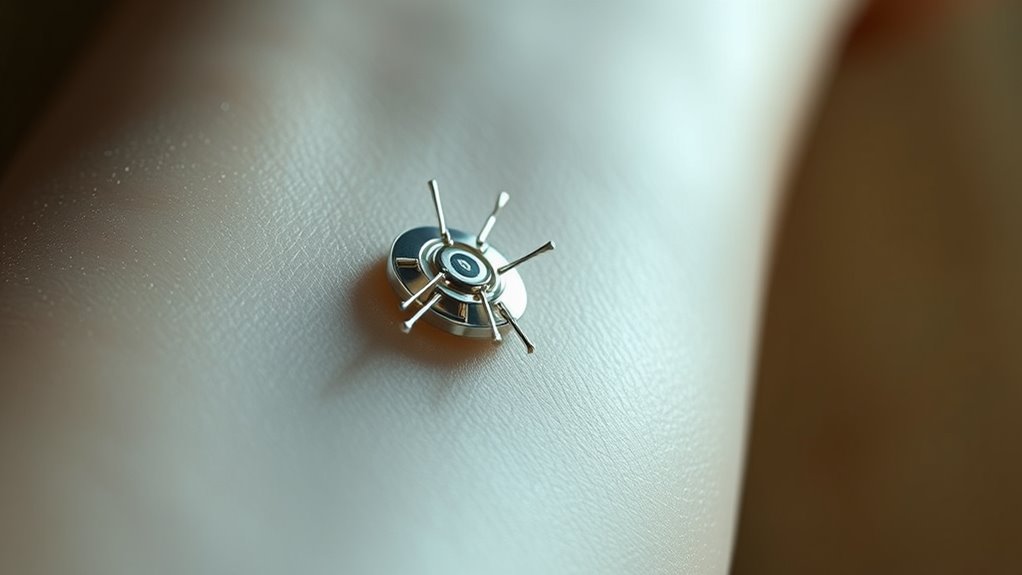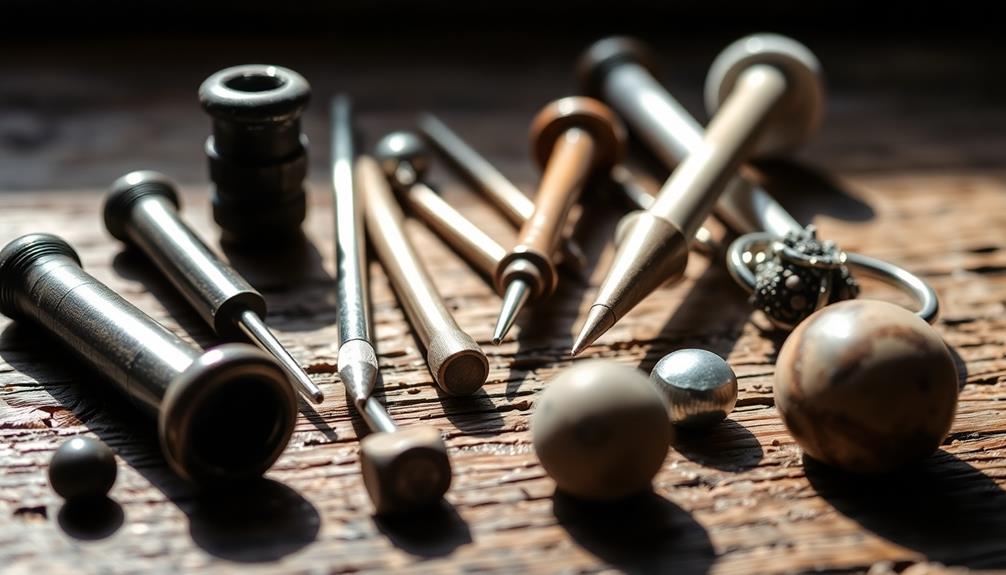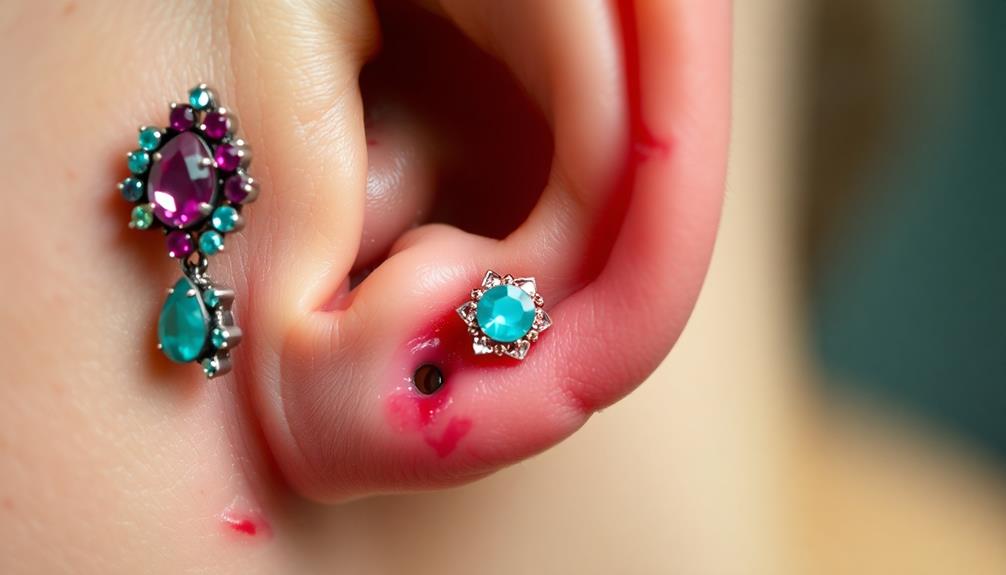Transdermal implants combine piercing artistry with advanced body engineering, allowing you to have long-lasting modifications beneath your skin. These tiny devices can be customized for style, health monitoring, or body enhancements, using biocompatible materials designed to blend seamlessly with your body. Safety is key, so research focuses on balancing durability with minimal immune response. If you want to discover how these innovative implants could transform personal expression and health, there’s much more to explore beyond this overview.
Key Takeaways
- Transdermal implants are advanced devices embedded under the skin for long-term medication delivery and health monitoring.
- They combine piercing techniques with body engineering to create seamless, customizable, and functional body modifications.
- Material safety and biocompatibility are critical to prevent immune reactions and ensure implant stability.
- Aesthetic customization allows for designs that blend with or express individual identity while maintaining safety.
- Innovations in surface treatment and materials balance safety, comfort, and stylistic flexibility in transdermal implant development.

Have you ever wondered how transdermal implants could revolutionize medication delivery and personal health management? These tiny devices, embedded just beneath the skin, promise a seamless way to administer drugs, track health metrics, and even personalize body modifications. Yet, as promising as they are, their development isn’t without hurdles. One of the biggest challenges is biocompatibility. When you introduce an implant into the body, your immune system reacts, sometimes aggressively. Ensuring that these devices are made from materials that the body accepts without inflammation or rejection is critical. If the material isn’t compatible, it can cause discomfort, scarring, or worse, implant failure. Researchers are constantly exploring biocompatible substances—such as certain medical-grade silicones, bioplastics, and coated metals—to minimize immune responses and improve long-term stability. Achieving this balance is essential for the success of transdermal implants, especially since they’re meant to stay beneath your skin for extended periods.
Alongside biocompatibility, aesthetic customization plays a significant role in how these implants are perceived and accepted. Unlike traditional piercings, transdermal implants can be designed to blend into your body seamlessly or stand out as a form of self-expression. You might opt for sleek, minimalist designs that are barely noticeable or choose bold, decorative shapes that reflect your personality. The ability to customize the appearance of these implants not only enhances aesthetic appeal but also fosters a sense of ownership and confidence. Modern techniques allow for precise sculpting and surface treatments, so your implant can match your skin tone, texture, or even incorporate artistic elements. This level of customization helps mitigate concerns about discomfort or foreignness, making the idea of having an implant feel more natural and integrated with your body. Additionally, ongoing advancements in material science are paving the way for even safer and more versatile options for transdermal implants.
However, balancing biocompatibility with aesthetic customization isn’t easy. Materials that are highly compatible with your body may limit design options, while those with creative flexibility might pose biocompatibility risks. Developers are working to overcome these hurdles by innovating new materials and coating technologies that marry safety with style. They’re also exploring surface modifications that promote tissue integration and reduce irritation, further improving how implants look and feel over time. Ultimately, the goal is to create transdermal implants that are safe, functional, and customizable, empowering you to take control of your health and personal expression in ways that were once unimaginable.
Frequently Asked Questions
How Long Do Transdermal Implants Typically Last?
You’re probably wondering how long transdermal implants last. Typically, these cosmetic enhancements can remain functional for several years, but their longevity depends on factors like body response and maintenance. As a popular body modification trend, they’re designed for durability but may require removal or replacement over time. Regular check-ups and proper care help guarantee your implant stays secure and functional, aligning with modern body modification trends.
Are Transdermal Implants Reversible or Removable?
You might wonder if transdermal implants are reversible or removable. They generally are, but implant maintenance and proper removal procedures are essential. If you decide to remove an implant, consult a professional to guarantee safe extraction. Removal procedures vary depending on the implant’s design and integration with your body. Always prioritize expert guidance to minimize risks and ensure your body heals properly after the removal process.
What Are the Potential Health Risks Involved?
Imagine your body as a delicate garden, vulnerable to weeds. Transdermal implants carry infection risks like invasive pests and can cause nerve damage, akin to pruning too deep. You might face swelling, pain, or allergic reactions, turning your body into a battleground. While innovative, these implants demand careful consideration, as complications can linger long after the initial procedure. Protect your health like your most precious bloom.
How Much Do Transdermal Implant Procedures Cost?
When considering transdermal implant procedures, you should look into the cost considerations, which can vary widely depending on the type of implant, the complexity of the procedure, and the expertise of your chosen professional. Keep in mind that insurance coverage for such procedures is often limited or unavailable, so you’ll likely need to pay out of pocket. Make sure to research thoroughly and budget accordingly for this unique body modification.
Who Is an Ideal Candidate for Transdermal Implants?
Imagine blending art with identity—you’re an ideal candidate for transdermal implants if you seek unique cosmetic enhancements that reflect your personality. While some pursue these for aesthetic reasons, others value their cultural significance. You should have a strong sense of commitment, good health, and realistic expectations. If you’re comfortable with body modification procedures and understand the care involved, this innovative form of self-expression might be perfect for you.
Conclusion
As you consider transdermal implants, remember they’re more than piercing—they’re like tiny bridges between technology and your body. Imagine a study showing that over 70% of users report feeling more connected to their implants, blurring the line between human and machine. This innovation isn’t just about adornment; it’s about redefining how you interact with your body. Embrace the future of body engineering, where piercing becomes a seamless part of your identity.
I’m Gillian. I love piercings and tattoos- there’s something about the way they make your body look that just makes me happy. I started this blog to share my passion for piercings and tattoos with the world and to help people who are thinking of getting their first piercing or tattoo.
I’ve been writing about piercings and tattoos for a while now on piercings-body.com. I love sharing my knowledge with others and helping people make informed decisions about their bodies.

















